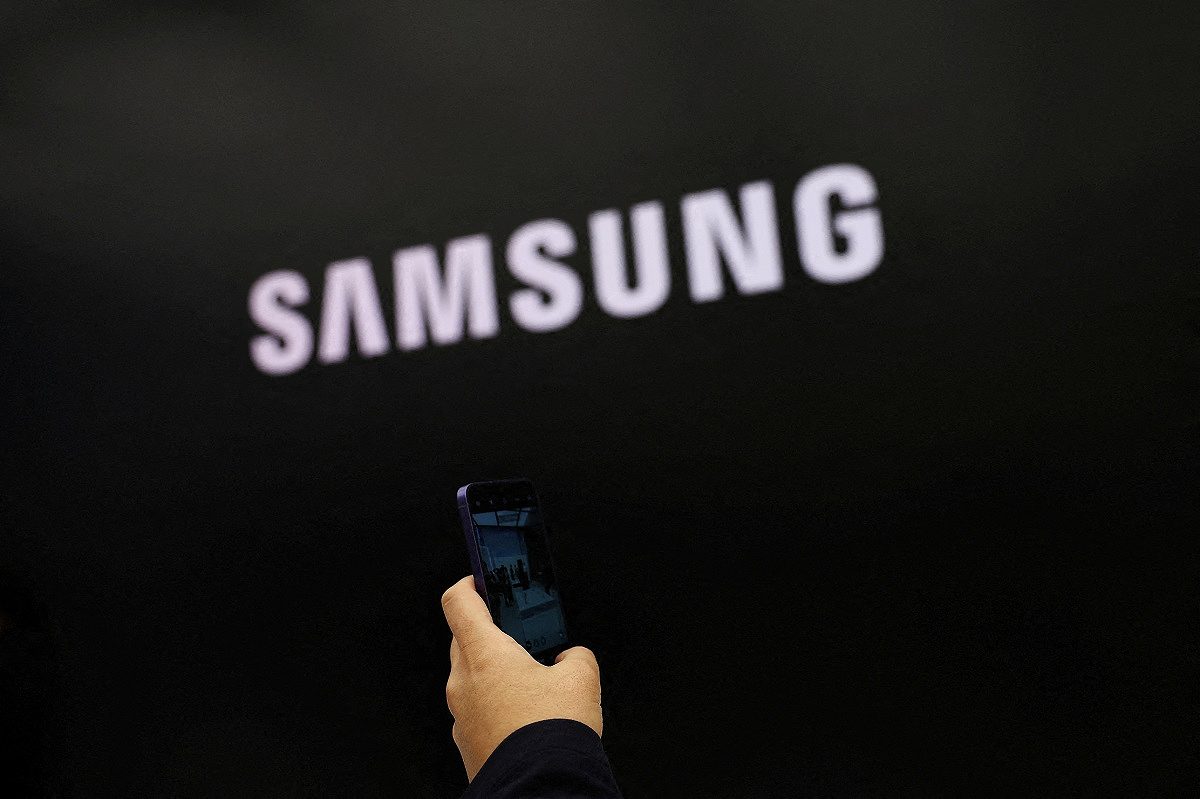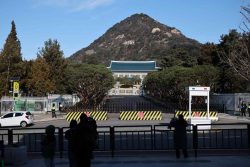
A visitor uses a Samsung Electronics’ flagship smartphone Galaxy S24 during its unveiling ceremony in Seoul, South Korea, January 15, 2024.
17:14 JST, July 5, 2024
SEOUL, July 5 (Reuters) – Samsung Electronics 005930.KS estimated on Friday a more than 15-fold rise in its second-quarter operating profit, as rebounding semiconductor prices driven by the artificial intelligence boom lifted earnings from a low base a year ago.
The world’s largest memory chip, smartphone and TV maker estimated its operating profit rose to 10.4 trillion won ($7.54 billion) in the quarter ended June 30, from 670 billion won a year earlier.
The profit beat a 8.8 trillion won LSEG SmartEstimate, which is weighted toward forecasts from analysts who are more consistently accurate, and the quarter was its most profitable since the third quarter of 2022.
In addition to higher chip prices, the better-than-expected profit likely reflected Samsung reversing its previous inventory writedowns on its books, as the value of its chip inventory has rebounded in accounting terms, analysts said.
Revenue likely rose 23% in the second quarter from the same period a year earlier to 74 trillion won, Samsung said.
Samsung shares opened up 1.2% after the guidance, versus a 0.4% rise in the wider market .KS11.
The company is due to release detailed second-quarter earnings on July 31.
AI DEMAND
Samsung’s key semiconductor division likely posted its second consecutive quarterly profit, improving on the first quarter, as memory chip prices keep rising from a mid-2022 to end-2023 trough that was caused by weak post-pandemic demand for gadgets that use the chips.
Explosive demand for high-end DRAM chips such as high bandwidth memory (HBM) chips used in AI chipsets, as well as chips used in data center servers and gadgets that run AI services have helped buoy chip prices, analysts said.
During the second quarter, memory chip prices jumped by about 13% to 18% versus the previous quarter for DRAM chips used in tech devices and 15% to 20% for NAND Flash chips used for data storage, according to data provider TrendForce.
But the climb in memory chip prices may slow in third quarter, with TrendForce forecasting a 5% to 10% price hike for both conventional DRAM and NAND Flash chips, as demand for older, legacy chips from the consumer electronics market remains lackluster.
“At the earnings call at the end of the month, we will be interested in Samsung’s outlook on legacy chips, which will be a sign for whether this chip industry recovery can last into next year,” said Ko Yeongmin, an analyst at Daol Investment & Securities.
AI-driven demand for high-end chips such as HBM and solid-state drives (SSDs) will outperform the rest of the market, analysts said, though Samsung has been lagging behind South Korean rival SK Hynix 000660.KS in the supply of high-end HBM chips to customers like Nvidia NVDA.O.
U.S. memory chip rival Micron Technology MU.Obeat estimates for its latest quarterly revenue last week driven by a demand surge from the AI industry, although its current-quarter forecast disappointed investors who had been even more upbeat.
Investors are awaiting news of whether Samsung’s latest fourth-generation HBM chips will receive approval to supply Nvidia after they failed earlier tests due heat and power consumption problems, according to sources.
Samsung in May replaced the chief of its semiconductor division in a bid to overcome what it called a “chip crisis.”
Shares in Samsung were up 8% year-to-date as of Thursday, compared to SK Hynix shares’ 63% rise.
($1 = 1,379.8700 won)
"News Services" POPULAR ARTICLE
-

American Playwright Jeremy O. Harris Arrested in Japan on Alleged Drug Smuggling
-

Japan’s Nikkei Stock Average as JGB Yields, Yen Rise on Rate-Hike Bets
-

Japan’s Nikkei Stock Average Licks Wounds after Selloff Sparked by BOJ Hike Bets (UPDATE 1)
-

Japan’s Nikkei Stock Average Buoyed by Stable Yen; SoftBank’s Slide Caps Gains (UPDATE 1)
-

Japanese Bond Yields Zoom, Stocks Slide as Rate Hike Looms
JN ACCESS RANKING
-

Keidanren Chairman Yoshinobu Tsutsui Visits Kashiwazaki-Kariwa Nuclear Power Plant; Inspects New Emergency Safety System
-

Tokyo Economic Security Forum to Hold Inaugural Meeting Amid Tense Global Environment
-

Imports of Rare Earths from China Facing Delays, May Be Caused by Deterioration of Japan-China Relations
-

University of Tokyo Professor Discusses Japanese Economic Security in Interview Ahead of Forum
-

Japan Pulls out of Vietnam Nuclear Project, Complicating Hanoi’s Power Plans























